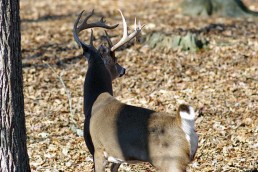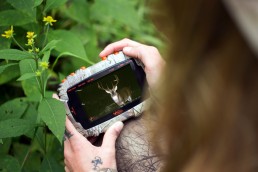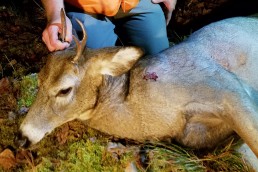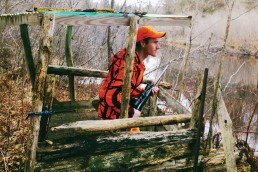Touting Just the Right Amount of Scouting for Deer
SHARE THIS POST
A lot of things sound good on paper, but fall apart during practice, and it’s not just a government thing. The importance of scouting for deer just prior to the season is a perfect example.
All the articles about scouting we read make perfect sense, but in a practical sense scouting “just prior to the season” usually does more harm than good for one simple reason: deer will pattern you much quicker than you pattern them.
I’m not saying it’s necessarily wrong, and they do teach us a lot about interpreting sign, but every article should come with a bold warning label of how scouting too close to the season can be “hazardous” to your success. I’m basing this on an awful lot of bowhunting experience. Over the years, I’ve learned a lot that has helped me keep the freezer full throughout the winter. Of them all, the “avoidance” of scouting is probably the most important.
Whenever we walk through the woods, every deer within 100 yards or more of our path knows we’re there, because humans are simply noisy creatures in the woods. And when we’re scouting, we seem to think we don’t have to be quiet or stealthy because we’re not actually hunting.
During the process of scouting, we spook a tremendous number of deer we don’t even realize are there because the only ones that snort are the ones we surprise at close range. The rest just slip away and stay away.
People who wear rubber-bottomed boots and take precautions against the distribution of their scent while hunting think it’s fine to scout in tennis shoes or smelly work boots. Consequently, they leave all kinds of stink and any deer that isn’t directly spooked by the scouting becomes alerted that humans were there for a day or two, even after they’re long gone.
Deer consider our presence quite disturbing, whether we are carrying a weapon or not, and they will go out of their way to avoid any place were they saw or smelled us. It takes about a week for them to get over our noisy and odoriferous intrusions; it may take a big buck even longer. That’s why so many times hunters who find oodles of evidence of deer activity just prior to opening day don’t see anything come opening day, not even fresh sign.
Are you enjoying this post?
You can be among the first to get the latest info on where to go, what to use and how to use it!
Despite the common advice, just prior to an actual hunt is the worst time of all to scout. I’ve learned that a good spot remains a good spot, year after year. So I start the season in dependable and old faithful places I haven’t visited since last season and branch out from there.
The exceptions are spots I find a month or so prior to the season during early squirrel-hunting excursions. Squirrel hunting is a great way to scout for deer because you do it with great stealth, in full camouflage and you go slow enough to notice a lot of the little things. No scouting should ever be done at a fast pace.
It’s not that I don’t scout at all during the season, and it’s not that I don’t like to do it, but I rarely scout before I climb up a tree. Almost all of my scouting is done after I climb down.
Once the bow season starts, I scout brand new spots only during the early afternoon with a stand on my back and bow in my hand. If I find a promising place, I’ll climb a tree and hunt it during that first entry. Then I leave it alone for at least a week. Deer move mostly at night, so while I may sometimes hunt the same spot morning and evening, I never hunt the same spot one specific evening and the very next morning. I use a climbing stand and try to hunt a different spot every day, resting every spot at least a week. I know a lot of locations and I add to them every year, but where I hunt each day usually is determined by the direction of the wind when I head out the door, and which spot I haven’t been to in a while.
I realize most can’t hunt that much, but the point I’m trying to make is that if you feel you must scout prior to the season, do it well before the season. Otherwise, you’re probably hurting your chances much more than helping them.
Ron Kruger has been communicating the outdoor experience for over four decades. He has worked as a full-time guide for trout on the North Fork, for crappies and bass on Kentucky Lake and for smallmouths on the Current River. He has served as editor of three outdoor magazines, and owns a patent on a fly/lure called the Desperate Diver.
MWO
SHARE THIS POST
Did you enjoy this post?
You can be among the first to get the latest info on where to go, what to use and how to use it!
Ron Kruger
Ron Kruger has been communicating the outdoor experience for more than four decades. He has worked as a full-time guide for trout on the North Fork, for crappies and bass on Kentucky Lake and for smallmouths on the Current River. He has served as editor of three outdoor magazines, and owns a patent on a fly/lure called the Desperate Diver.




